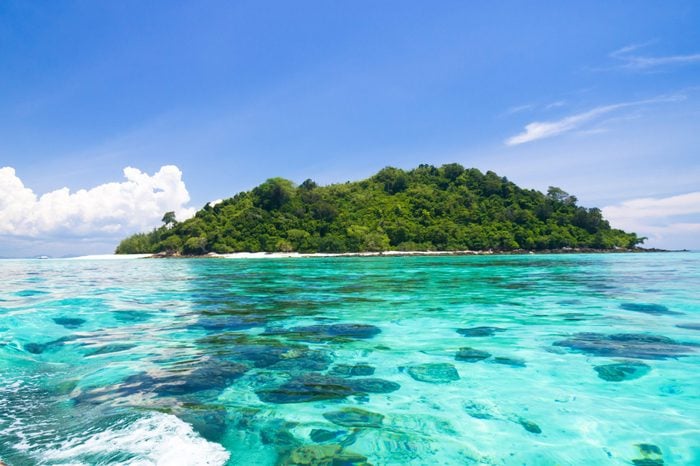
Vanishing islands
Sadly, rising sea levels present a serious danger to all sorts of natural features—including islands. And though it may seem like a slow process, it could very well cause several islands throughout the world to be completely gone before the 21st century is over. And rising water is just one of many scary things that could happen if the glaciers continue to melt.
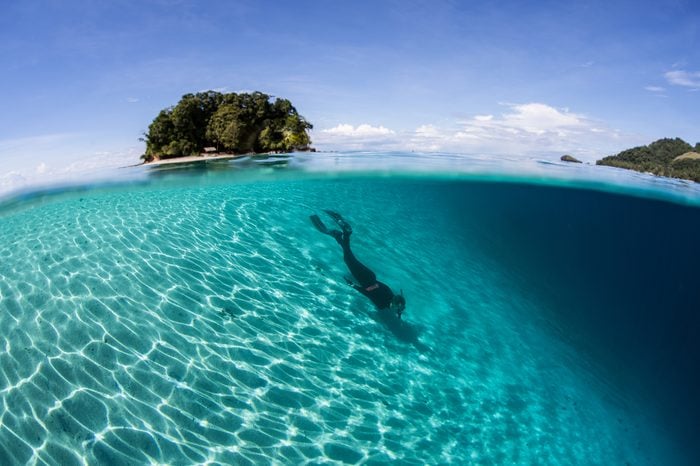
Solomon Islands
The Solomon Islands, a group of nearly 1,000 islands and atolls in the South Pacific, are slowly being taken over by the sea. In fact, the sea level has risen by around 8 millimeters per year since 1993. It is rising so fast that the provincial capital of Choiseul is just 6.6 feet about sea level, and a new town is being built for residents to relocate. According to a 2016 paper published in the journal Environmental Research Letters, five reef islands have already disappeared, and several villages that had stood since 1935 were destroyed on other islands with receding shorelines. Sadly, coral reefs are also breathtaking places you need to visit before they disappear.
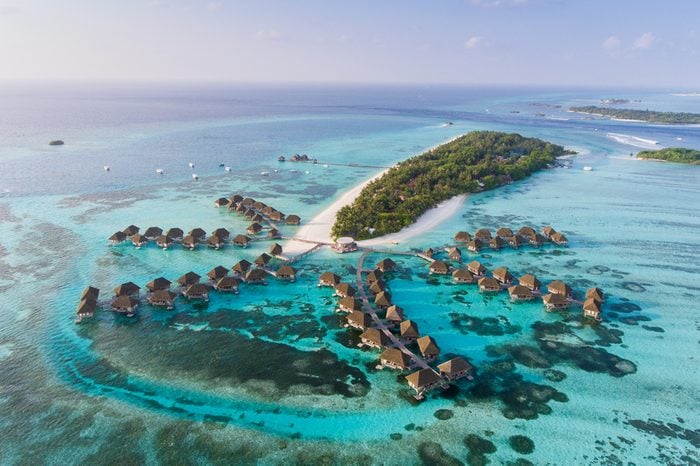
Maldives
The popular and beautiful Maldives, an archipelago in the Indian Ocean that’s home to many lush resorts and even a variety of underwater hotels, are also slowly being covered by the ocean. According to the CIA, the low elevation of the islands makes them sensitive to the sea level rising. The World Bank says that at the current projections of sea level rise, the entire country could be underwater by the year 2100. In 2009, the country’s president held a meeting under water in an attempt to bring attention to the impending disaster.
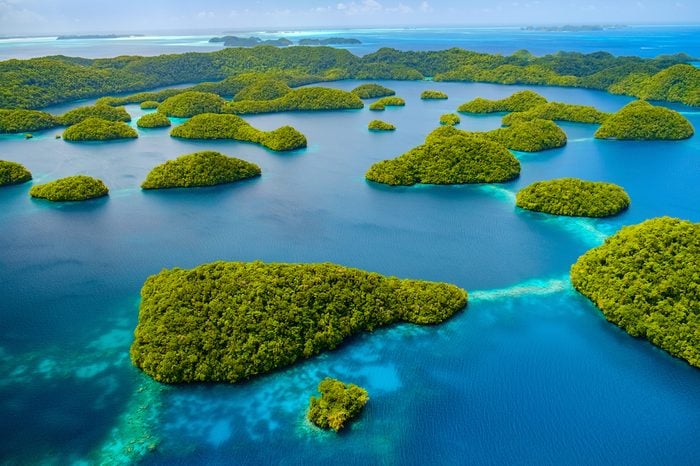
Palau
A paper published in collaboration between the Palau National Weather Service Office and the Pacific Climate Change Science Program says that the sea level has risen in Palau, located in the South Pacific, by about 0.35 inches per year since 1993, about three times the global average. It is expected to continue to rise by up to 24 more inches by the year 2090. Public Radio International reports that residents say their yards are flooding during some full moon high tides and are considering moving to a new country. The island’s famous non-stinging jellyfish are even disappearing, which may also be due to climate change. You’ll also want to see 14 of the most remote places on Earth.
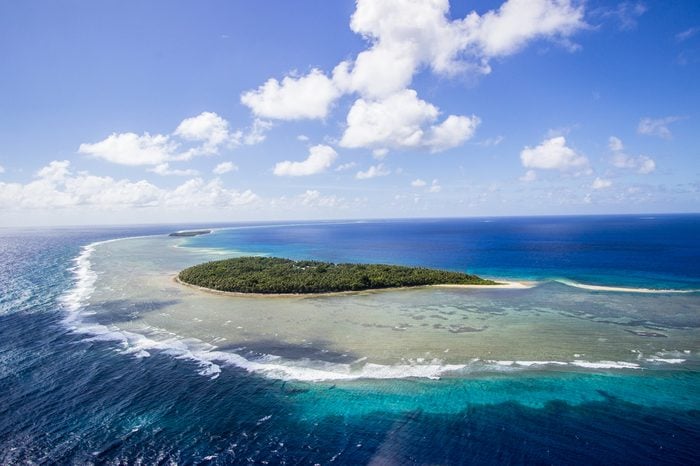
Micronesia
Micronesia is a country made up of 607 islands located 2,500 miles southwest of Hawaii in the Pacific Ocean. Its mere 270 square miles of land are filled with mountains, mangroves, lagoons, and beaches. Due to increasing sea levels, the nation has seen several islands disappear within recent memory, while others have been severely reduced in size, according to the Journal of Coastal Conservation. If you love taking island vacations, you need to know which islands you can still visit during hurricane season.
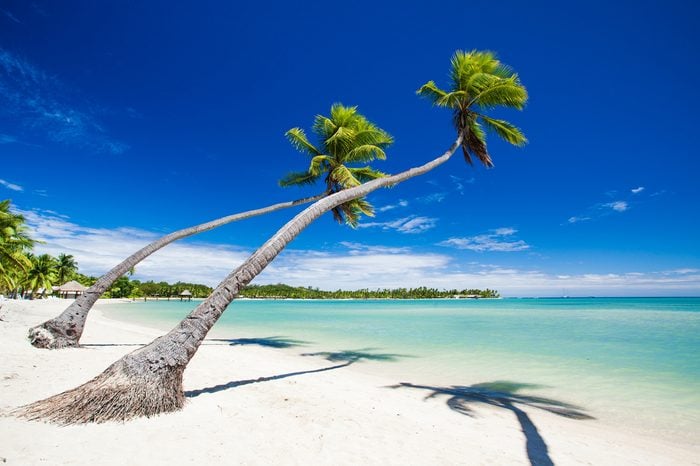
Fiji
The Pacific Islands of Fiji are also low-lying and vulnerable to changes in ocean levels. The United Nations Framework Convention on Climate Change says that the village of Vunidogoloa was the first to begin relocating because of the rapid sea level rise, which is continuing to worsen. A World Bank report says over the last few decades, some villages have reported a loss of 15-20 meters of shoreline due to loss of mangroves. Sea levels are expected to rise up to 43 centimeters by 2050, according to the report. Rises in ocean temperatures also affect the coral reefs, resulting in coral bleaching that turns the coral white and vulnerable to disease. Here’s a sobering glimpse of what the world’s most polluted beaches used to look like.
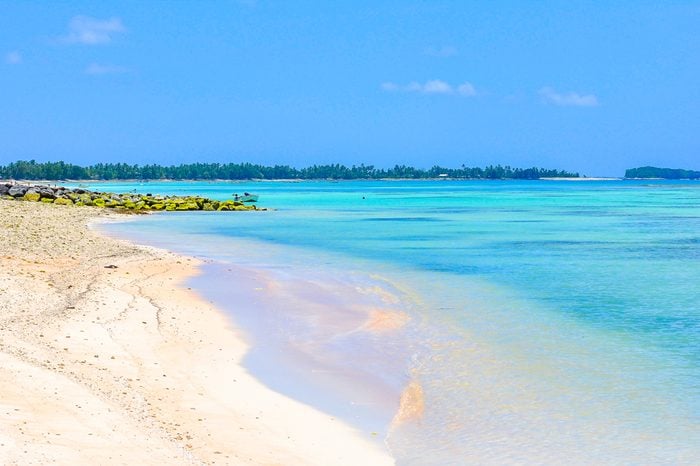
Tuvalu
The Prime Minister of Tuvalu, a remote South Pacific nation, has stated that “sea level rise and more severe weather events loom as a growing threat to our entire population.” The Tuvalu government says it’s one of the most vulnerable places on Earth to the impact of rising sea levels, which could bring complete disaster to its 10,000 residents. You can fully appreciate some of the natural beauty that is at stake with these photos of the most beautiful countries in the world.
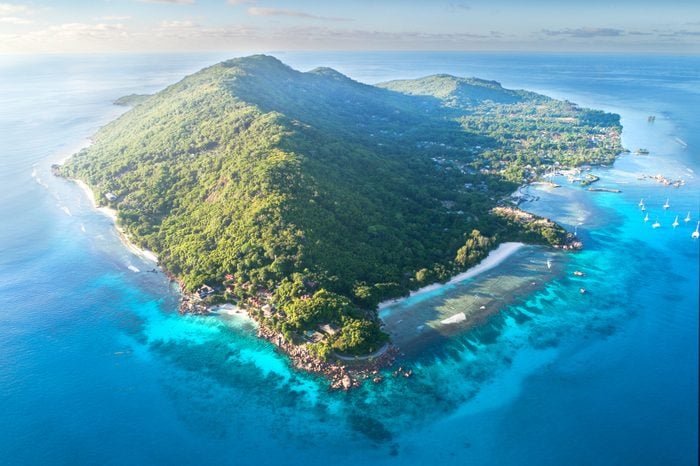
Seychelles
Off the east coast of Africa, the Seychelles are experiencing an unprecedented rise in sea levels compared to the last 6,000 years, according to a study published in the Proceedings of the National Academy of Sciences. With around 85 percent of the country’s development sitting on coastlines, rising sea levels can be catastrophic. The Seychelles News Agency reports that just a one-meter rise could cover many of its low-lying islands and inhabited coastal areas, which would be a 70 percent loss of its land mass. Mangrove forests and coral reefs are also at severe risk.
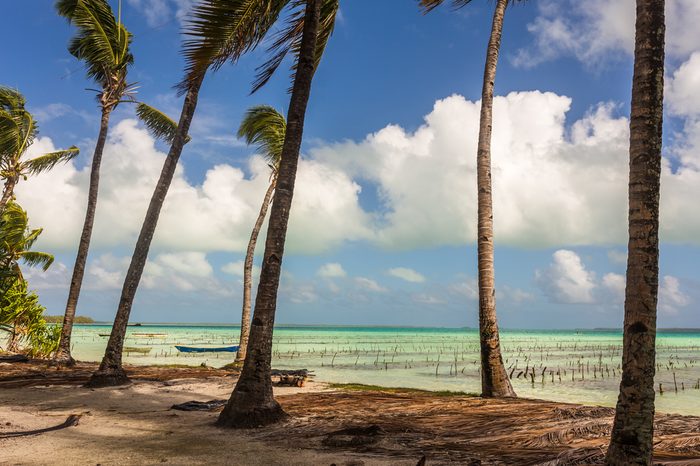
Kiribati
There’s a plan to move everyone who lives on this island in the central Pacific completely off due to increasing water levels. The president of Kiribati, an independent republic, looked to buy land in Fiji in 2012 as “climate change insurance” for the island’s population. The president was quoted as saying, “moving won’t be a matter of choice. It’s basically going to be a matter of survival.” He has said his country will become uninhabitable by 2050. In addition to rising sea levels, ocean pollution is a serious problem.
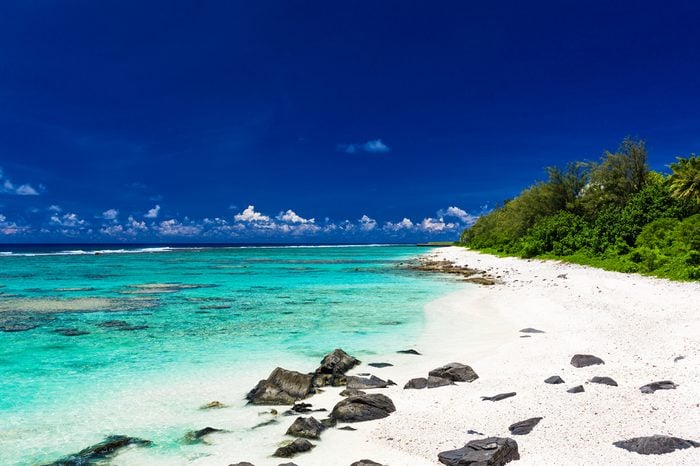
Cook Islands
Described by its tourism board as “like Hawaii was 50 years ago,” the Cook Islands off of New Zealand are another set of islands affected by rising sea levels. With a predicted increase in ocean levels of up to 55 centimeters by the year 2090, the rising waters are expected to damage roads, bridges, ports, and runways, which will affect residents and tourism. Check out these 30 secret island escapes around the world.
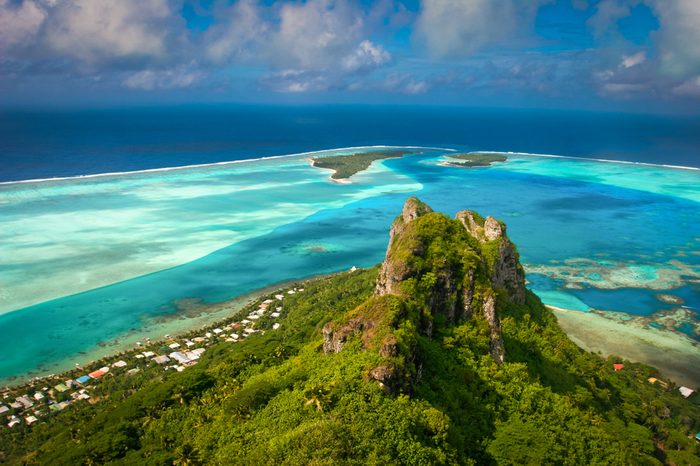
French Polynesia
Made up of popular tropical retreats like Bora Bora, Tahiti, and the Society Islands, French Polynesia is on many a traveler’s bucket list. But in the next hundred years, it may no longer be an option. A paper published in Nature Conservation predicted that 30 percent of its islands will be overtaken by water by the end of the century. As an alternative to moving to a new country, the government is considering building “floating islands” for residents near Tahiti with the hopes of attracting tech companies to the concept.
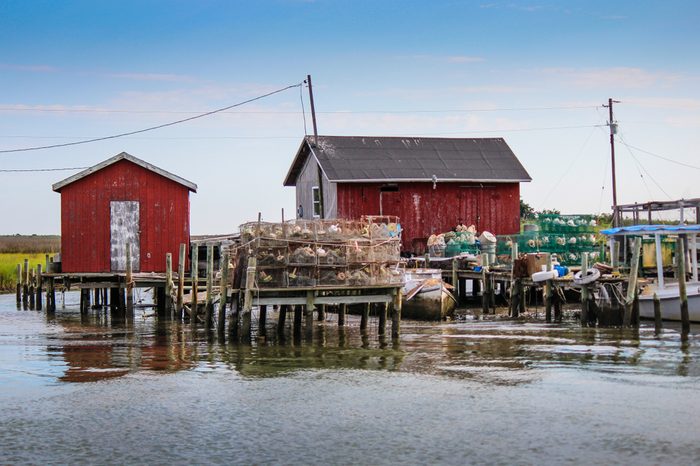
Tangier Island, Virginia
Even the United States is affected by rising sea levels. Tangier Island, about 12 miles off the east coast in Virginia’s Chesapeake Bay, is only accessible by boat or plane. Bikes and golf carts are main modes of transportation in this “soft crab capital of the nation,” and the island is made up of narrow streets, natural beaches, charming gift shops, and ice cream stores. However, more than 60 percent of the island has been lost to the sea since 1850, according to Nature.com, with the remaining expected to be submerged within the next 25 to 50 years. You may want to check out these best island vacations to take in the U.S. instead.
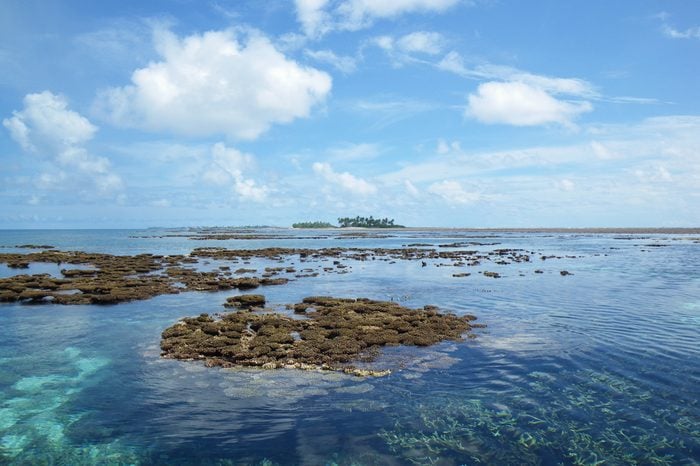
Marshall Islands
Water levels are rising on the Marshall Islands, a group of islands halfway between Hawaii and Australia known for their friendly locals and coral reefs, as well. Increasing at a rate of 7 millimeters per year, according to a brochure produced by the Marshall Islands National Weather Service Office and the Pacific-Australia Climate Change Science and Adaptation Planning Program, the rise is about double the global average. The project estimates that water levels will continue to rise by 7.5 inches by 2030, increasing storm surge and coastal flooding. Expand your marine knowledge with these facts you never knew about our oceans.
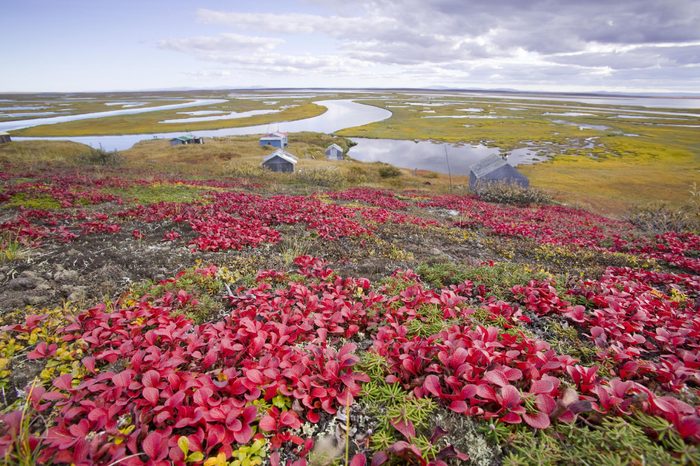
Shishmaref, Alaska
This small island with a population of just 650 has slowly been disappearing into the sea over the last 50 years, according to the U.S. Department of the Interior (DOI), losing 100 feet since 1997. The DOI says the entire island will be gone within the next 20 years. One resident, Esau Sinnok, says he’s had to move in and out of 13 houses due to the loss of land. Though residents voted to relocate from this island accessible only by plane, a lack of funding makes these efforts difficult.